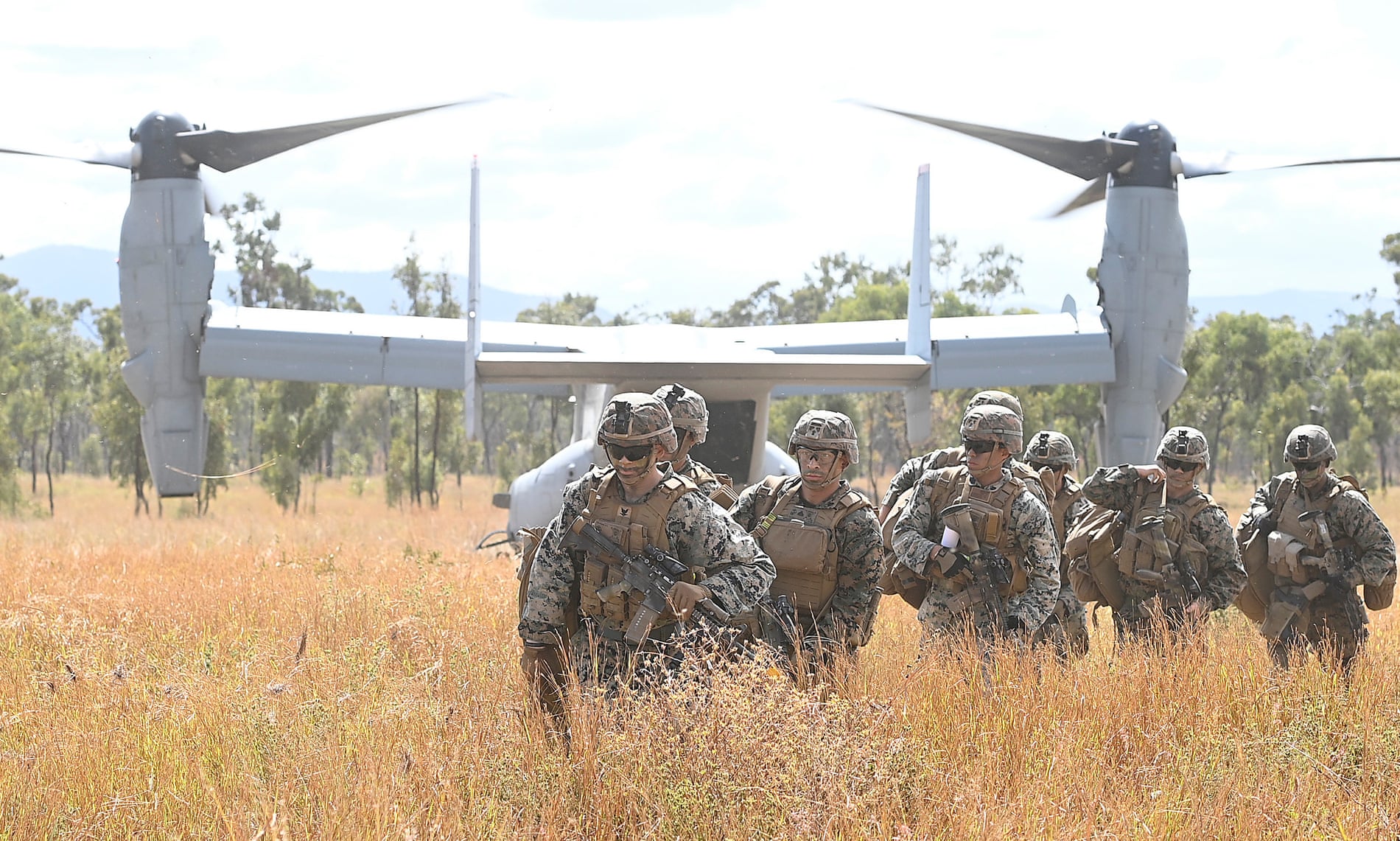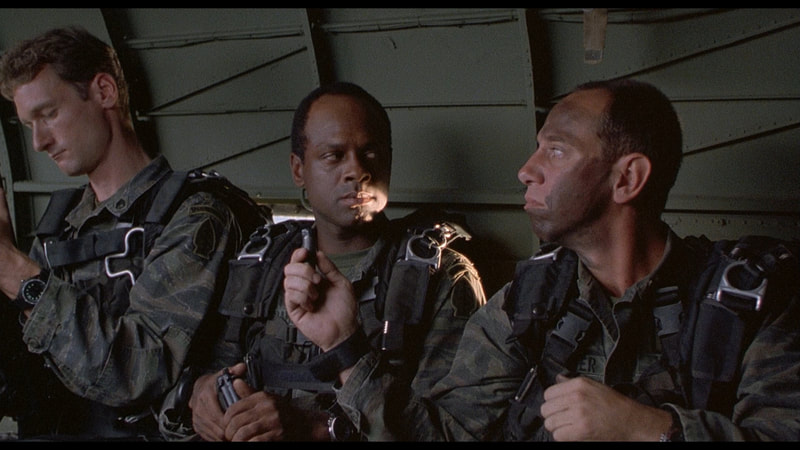- Joined
- Jan 17, 2010
- Messages
- 4,522
- Reaction score
- 5,483
American war planners used joint Talisman Sabre exercises to position equipment in northern Victoria

When US and Australian troops practised amphibious landings, ground combat and air operations last year, they drew headlines about the allies deepening defence cooperation to counter China’s growing military ambitions.
But for US war planners preparing for a potential conflict over Taiwan, the high-profile Talisman Sabre exercises had a far more discrete value: they helped create new stockpiles of military equipment that were established in Australia after the drills ended in August, US officials said.
The US and its allies are increasingly worried that in the coming years the Chinese President, Xi Jinping, could order his military to seize Taiwan, the democratically governed island China considers its own territory. So, the US military is taking a hard look at its own military readiness and trying to play catch-up in a critical area: its logistics network.

US Marines near Townsville as part of Talisman Sabre exercises, in 2021.
The US military is stockpiling equipment in Australia as part of its new logistics strategy in the Indo-Pacific. Photograph: Ian Hitchcock/Getty Images
The equipment from Talisman Sabre included roughly 330 vehicles and trailers and 130 containers in warehouses in Bandiana, in north-east Victoria, the Army says.
The amount of equipment, which the US military has not previously acknowledged, is enough to supply about three logistics companies, with as many as 500 or more soldiers.
It’s the kind of materiel that’s needed for a future drill, a natural disaster, or in a war.
“We’re looking to do this more and more,” Gen Charles Flynn, the top US army commander in the Pacific, .
“There’s a number of other countries in the region where we already have agreements to do that,” he said, without naming specific countries.
Reuters interviews with more than two dozen current and former US officials found that US military logistics in the Pacific is one of the greatest US vulnerabilities in any potential conflict over Taiwan.
US war games have concluded that China would probably try to bomb jet fuel supplies or refuelling ships, crippling US air and sea power without having to battle heavily armed fighter jets or sink America’s fleet of surface warships, according to current and former officials and experts.
In response, the US is trying to spread its military logistics hubs across the region – including warehouses in Australia, officials said.

Asked about Reuters’ conclusions, the Pentagon said that the Department of Defense was working with allies to make US forces more mobile and distributed.
The Chinese embassy in Washington did not directly address the Reuters report, but a spokesperson said the US should “stop enhancing military contact with the Taiwan region” and “stop creating factors that could heighten tensions in the Taiwan Strait”.
The Australian embassy in Washington referred questions to the Ministry of Defense, which did not immediately respond to a request for comment.
Critics say Washington’s network is still too concentrated and that the government hasn’t put enough money or urgency toward the effort.
“When you really dig down a couple of layers, the intel community is blinking red as far as for the next five years. And yet some of these timelines (to address the risks) are 10, 15, 20 years long,” said congressman Mike Waltz, a Republican who leads the House subcommittee overseeing military logistics and readiness.
“There’s a mismatch there.”
Supporting Taiwan, roughly 160 kilometres from the coast of China, would be orders of magnitude harder, US officials and experts acknowledge.
The US has not formally said it would intervene if China were to attack Taiwan but the president, Joe Biden, has repeatedly suggested he would deploy US troops to defend the island.
Xi has ordered his military to be ready to take Taiwan by 2027, US officials say, but many analysts see that as an attempt to galvanise his military rather than a timeline for invasion.
A senior US military official, speaking on the condition of anonymity, said supplies of ammunition are at the top of the list of priorities in the Indo-Pacific, followed by fuel, food and spare parts.

“If we run out of the things to shoot … that’s going to be an immediate problem,” the official said, adding planning for a Taiwan contingency was already well under way.
US officials warn that in a major conflict navy ships could quickly run out of missiles.
In a war game run for US Congress in April, China prepared for an amphibious assault on Taiwan with massive air and missile strikes against US bases in the region. That included the US naval base on the Japanese island of Okinawa and the Yokota airbase in western Tokyo.
The potential affect of attacks on US logistics hubs, refuelling ships and aerial refuelling tankers, was a “wake up call” for many lawmakers, said Becca Wasser at the Center for a New American Security (CNAS) thinktank, which ran the war game.
“China is going to purposely go after some of the logistics nodes to make it difficult for the United States to sustain operations in the Indo-Pacific,” Wasser said.
To address such vulnerabilities, the US military is looking to places like Australia as more secure locations to stockpile equipment, even as it expands cooperation with the Philippines, Japan and other partners in the Pacific.
The Biden administration announced in July the US would also create an interim logistics centre in Bandiana with the aim of eventually creating an “enduring logistics support area” in Queensland.

According to an internal US military document seen by Reuters, the facilities in Bandiana could hold more than 300 vehicles and had 800 pallet positions.
In July, the US Air Force carried out Mobility Guardian 23, an exercise in the Indo-Pacific with Australia, Canada, France, Japan, New Zealand and the UK that included practising air refuelling and medical evacuations.
The military used the opportunity to deploy equipment, including in Guam. That gear helped forces there deal with fallout from the recent Typhoon Mawar but would also be useful in any future conflict, said air force Maj Gen Darren Cole, the director of operations at Air Mobility Command.
Cole noted his command was responsible not just for disaster relief but contingencies “all the way up to full combat operations, full scale major war.”

When US and Australian troops practised amphibious landings, ground combat and air operations last year, they drew headlines about the allies deepening defence cooperation to counter China’s growing military ambitions.
But for US war planners preparing for a potential conflict over Taiwan, the high-profile Talisman Sabre exercises had a far more discrete value: they helped create new stockpiles of military equipment that were established in Australia after the drills ended in August, US officials said.
The US and its allies are increasingly worried that in the coming years the Chinese President, Xi Jinping, could order his military to seize Taiwan, the democratically governed island China considers its own territory. So, the US military is taking a hard look at its own military readiness and trying to play catch-up in a critical area: its logistics network.

US Marines near Townsville as part of Talisman Sabre exercises, in 2021.
The US military is stockpiling equipment in Australia as part of its new logistics strategy in the Indo-Pacific. Photograph: Ian Hitchcock/Getty Images
The equipment from Talisman Sabre included roughly 330 vehicles and trailers and 130 containers in warehouses in Bandiana, in north-east Victoria, the Army says.
The amount of equipment, which the US military has not previously acknowledged, is enough to supply about three logistics companies, with as many as 500 or more soldiers.
It’s the kind of materiel that’s needed for a future drill, a natural disaster, or in a war.
“We’re looking to do this more and more,” Gen Charles Flynn, the top US army commander in the Pacific, .
“There’s a number of other countries in the region where we already have agreements to do that,” he said, without naming specific countries.
Reuters interviews with more than two dozen current and former US officials found that US military logistics in the Pacific is one of the greatest US vulnerabilities in any potential conflict over Taiwan.
US war games have concluded that China would probably try to bomb jet fuel supplies or refuelling ships, crippling US air and sea power without having to battle heavily armed fighter jets or sink America’s fleet of surface warships, according to current and former officials and experts.
In response, the US is trying to spread its military logistics hubs across the region – including warehouses in Australia, officials said.

Asked about Reuters’ conclusions, the Pentagon said that the Department of Defense was working with allies to make US forces more mobile and distributed.
The Chinese embassy in Washington did not directly address the Reuters report, but a spokesperson said the US should “stop enhancing military contact with the Taiwan region” and “stop creating factors that could heighten tensions in the Taiwan Strait”.
The Australian embassy in Washington referred questions to the Ministry of Defense, which did not immediately respond to a request for comment.
Critics say Washington’s network is still too concentrated and that the government hasn’t put enough money or urgency toward the effort.
“When you really dig down a couple of layers, the intel community is blinking red as far as for the next five years. And yet some of these timelines (to address the risks) are 10, 15, 20 years long,” said congressman Mike Waltz, a Republican who leads the House subcommittee overseeing military logistics and readiness.
“There’s a mismatch there.”
Risks for the US
The US military’s logistics arm, US Transportation Command (TransCom), has had a major success: funnelling more than 299m kilograms of equipment and over 2m rounds of artillery to the Ukrainian military in its war with Russia.Supporting Taiwan, roughly 160 kilometres from the coast of China, would be orders of magnitude harder, US officials and experts acknowledge.
The US has not formally said it would intervene if China were to attack Taiwan but the president, Joe Biden, has repeatedly suggested he would deploy US troops to defend the island.
Xi has ordered his military to be ready to take Taiwan by 2027, US officials say, but many analysts see that as an attempt to galvanise his military rather than a timeline for invasion.
A senior US military official, speaking on the condition of anonymity, said supplies of ammunition are at the top of the list of priorities in the Indo-Pacific, followed by fuel, food and spare parts.

“If we run out of the things to shoot … that’s going to be an immediate problem,” the official said, adding planning for a Taiwan contingency was already well under way.
US officials warn that in a major conflict navy ships could quickly run out of missiles.
In a war game run for US Congress in April, China prepared for an amphibious assault on Taiwan with massive air and missile strikes against US bases in the region. That included the US naval base on the Japanese island of Okinawa and the Yokota airbase in western Tokyo.
The potential affect of attacks on US logistics hubs, refuelling ships and aerial refuelling tankers, was a “wake up call” for many lawmakers, said Becca Wasser at the Center for a New American Security (CNAS) thinktank, which ran the war game.
“China is going to purposely go after some of the logistics nodes to make it difficult for the United States to sustain operations in the Indo-Pacific,” Wasser said.
To address such vulnerabilities, the US military is looking to places like Australia as more secure locations to stockpile equipment, even as it expands cooperation with the Philippines, Japan and other partners in the Pacific.
The Biden administration announced in July the US would also create an interim logistics centre in Bandiana with the aim of eventually creating an “enduring logistics support area” in Queensland.

According to an internal US military document seen by Reuters, the facilities in Bandiana could hold more than 300 vehicles and had 800 pallet positions.
In July, the US Air Force carried out Mobility Guardian 23, an exercise in the Indo-Pacific with Australia, Canada, France, Japan, New Zealand and the UK that included practising air refuelling and medical evacuations.
The military used the opportunity to deploy equipment, including in Guam. That gear helped forces there deal with fallout from the recent Typhoon Mawar but would also be useful in any future conflict, said air force Maj Gen Darren Cole, the director of operations at Air Mobility Command.
Cole noted his command was responsible not just for disaster relief but contingencies “all the way up to full combat operations, full scale major war.”



